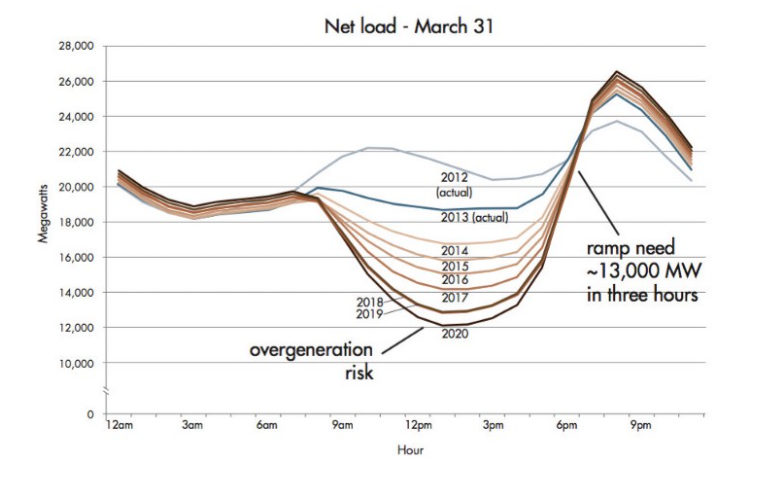New Energy Insights
- Home /
- New Energy Insights /
- Battery Storage: A Necessity for the Future of Solar
Solar array systems with energy storage have gained a significant amount of popularity in recent years. This is attributed to the decreasing price of batteries and the increasing number of grid outages due to extreme weather events that cause energy supply and demand disparities.
Between 2009 and 2019, there was a 30% increase in grid outages. This sharp increase in just a 10-year period was largely due to extreme climate events and an overall growing demand for energy. Last week, Texas residents experienced the grid supply and demand crisis with extreme cold temperatures causing power outages for thousands of households across the state.
As more people adopt solar, utilities must evermore carefully balance the supply and demand of electricity. The day-time nature of solar systems creates what is called a “duck curve.” The “duck curve” is a result of the disparity between the times where demand for electricity increases, and when solar systems are most productive. Energy demand falls after 9 am as individuals go to work, just as solar systems begin producing significant amounts of energy. Currently, solar systems run the risk of over-generation, where some of the energy produced gets wasted since no one is home to use it. As the day comes to an end and the demand for energy spikes sharply, the sun goes down and the solar systems’ energy production tapers off.
See reference 4.
This over-generation problem can be solved by combining solar systems with battery storage.
Batteries have the potential to provide reliable and cheaper electricity solutions in off-grid communities. For example, in places like Hawaii, electricity is much more expensive since they have to import their fuel from overseas. In such cases, solar can be the cheaper alternative (5)
On the utility scale, batteries can help store excess generation and discharge the stored energy during peak hours. This helps defer further investment in increasing load carrying capacity of the present electrical networks and helps ease congestion on transmission lines. (6)
During peak hours of electricity usage, the demand for energy spikes for a short amount of time. Without batteries, the utilities must create more infrastructure in order to ensure that the peak demand is met. But if we have batteries, they can store some of the over-generation that solar produces and discharge that energy so that utilities do not have to spend more money on infrastructure.
Reducing the current investment costs with government aid is one important way in which battery deployment can be pushed forward. Government authorities can increase the demand for battery storage by providing subsidies to battery storage owners.
In addition to cities, corporate and institutional energy customers can take the lead by adding storage to existing solar systems and evaluating the direct cost savings associated with the upgrade. Collectively, the buying power of these customers could help make solar battery storage an important accelerator of our transition to a cleaner and greener future.
References:
- https://www.energy.gov/eere/articles/confronting-duck-curve-how-address-over-generation-solar-energy
- https://earth911.com/eco-watch/energy/4-trends-in-solar-energy-for-2020/
- https://medium.com/@gabo.zhang/city-scale-decarbonization-experiment-duck-curve-14f90ebbf03b
- https://www.irena.org/newsroom/articles/2020/Mar/Battery-storage-paves-way-for-a-renewable-powered-future
- https://www.irena.org/-/media/Files/IRENA/Agency/Publication/2019/Sep/IRENA_Utility-scale-batteries_2019.pdf
How Can New Energy Equity Help You Reach Your Solar Goals?
Stay up-to-date with New Energy Equity by joining our mailing list.

-1.png)

